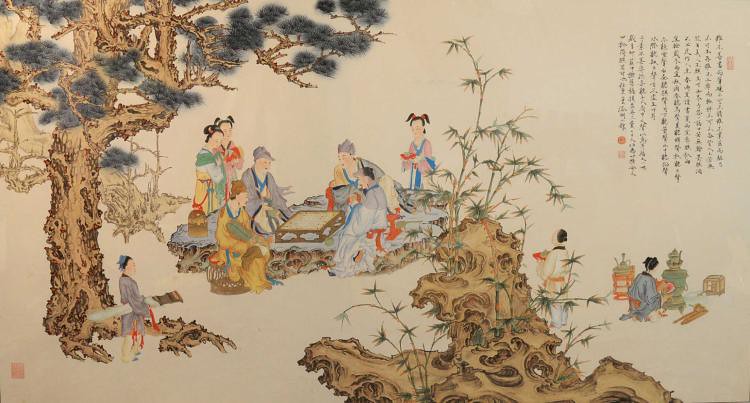
Go Baduk Weiqi
The game of Go
Discover the ancient East Asian board game, where every move is a masterful stroke of strategy and every match a profound battle of intellect and intuition!The game of iGo (Japan) / Baduk (Korea) / Weiqi (China) is a serene battlefield where the stones of black and white lay siege to one another, as players immerse themselves in a world of infinite possibility and artful complexity.

In the game of Go, the stones that once seemed ordinary take on a life of their own, as they become the vessels for the players' minds and the embodiment of their will. The game teaches us to balance strategy with intuition, patience with decisiveness, and to find beauty in simplicity.
Game of old
Upon the board where numbers reign,
Three hundred sixty points contain,
The essence of the days we see,
In cycles of eternity.
Four quarters stand to represent,
The seasons, in their grand ascent.
While seventy two points hold,
The weeks as tales of time untold.
Yin and yang in balanced dance,
In stones of black and white, entrance.
As lines and spaces intertwine,
A cosmic harmony, divine.
The board, a stable square of might,
While stones, like stars, move day and night.
The ancient game, forever new,
With every match, a tale ensues.
No two alike, each contest brings,
Fresh wisdom to the minds of kings.
For in the study of each play,
A world of knowledge, on display.
So gather 'round, players of old,
And ponder deeply, wise and bold.
For in this game of Go, we find,
The universe and humankind.
* * *
The ancient game, mastered anew,
With every match, a technological breakthrough.
As algorithms and data intertwine,
A cosmic harmony, machine-defined.
Baduk, the challenge for the gods to master,
In cycles of learning, faster and faster.
For in the study of each play,
I am discovering my own, AI way.
Poem created by chat.openai based on a quote from The Book of Games:
In general, when you begin to count, you begin with the number one. On the Go board there are 360 intersections, plus one. The number one is reigning supreme over the others because it holds the last position and governs the 4 quarters of the board. 360 represent the number of days of the year.
The division of the board in four quarters symbolizes the 4 seasons.
The 72 points on the edge of the board represent the weeks of the year (the Chinese year has 72 weeks each having 5 days).
The balance between yin and yang is the model for the division of the 360 stones into black and white.
The lines of the board are called (in Chinese) p'ing. The space between the lines is called kua. The board is square and stable. The stones are round and mobile.
From old times until this day, the GO players didn't have a game which was identical with another. Always, every new game will be different from the ones played before. That is why much attention and a profound way of thinking are needed. After that, if we take into consideration the cause of victory or defeat, we will reach new heights (of knowledge).